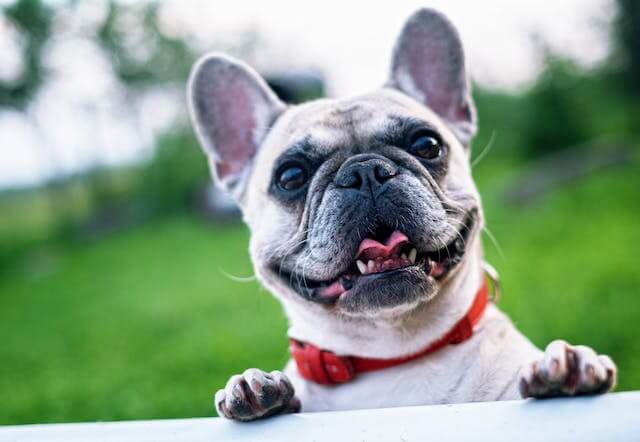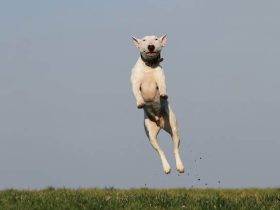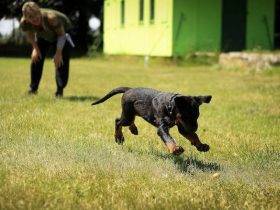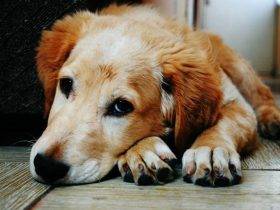Introduction
Adopting a rescue dog is a rewarding experience. However, it can also present challenges, especially when it comes to potty training. Dogs that come from shelters often have not received consistent house training in the past. Their prior living situations may also have negatively impacted their toilet manners. Fortunately, with patience and the right approaches, you can successfully potty train even an older rescue dog.
This comprehensive guide will provide you with all the information and tips you need to housebreak a dog you adopted from an animal shelter. We will look at the specific needs of rescue dogs and how their history may affect potty training. I will share techniques that work well for these pups as well as timelines and schedules you can follow. You’ll also find advice on how to set your dog up for success, handle accidents, and maintain training. By the end, your rescue dog will be well on its way to being reliably house-trained.
Understanding the Needs of Rescue Dogs
Rescue dogs come with more question marks when it comes to past experiences, behaviors, and training compared to puppies. Their life experiences prior to the shelter are rarely known, which makes potty training a rescue dog more challenging. However, with empathy and customized techniques, you can help your rescue dog unlearn any bad habits. Here are a few things to keep in mind:
Lack of consistency: Dogs thriving in shelters still don’t receive consistent potty training like dogs in homes. Without proper routines, rescue dogs may not understand house training cues.
Stress and change: Being in a shelter is stressful for dogs. This can disrupt potty behaviors that were previously learned. Changes in environment and routine from the shelter to your home also increase stress levels initially.
Past experiences: If a rescue spent time as a stray or in a previous uncaring home, potty habits may not have been enforced or facilitated at all. Such dogs need re-teaching from scratch.
Age: Older dogs can still learn but may be set in certain ways after years of independent living. Potty training takes more time and patience with senior rescues.
Medical issues: Some dogs enter shelters with medical conditions like urinary tract infections that cause accidents. These need resolution before consistent house training.
Understanding a rescue dog’s potential needs above will help manage expectations during potty training and choose encouragement over punishment in response to mistakes. Armed with this perspective, you are ready to begin!
Setting Up Your Rescue Dog for Potty Training Success
Before starting formal house training, take time to get your new rescue dog adjusted to its new home. Allowing a comfortable transition period sets the stage for future potty training achievement. Here are some things to focus on right away:
Establish a Safe Space
Dogs feel secure in crates. Provide a comfortable crate and make it a positive experience through treats and praise when inside. This gives your dog a safe den and prevents mistakes around the house.
Feed on a Schedule
Feed at set times each day and avoid snacks between meals. This establishes a predictable potty schedule for your dog to follow.
Play, Exercise and Mental Stimulation
Tire your dog out through daily walks, play sessions, puzzle toys, training, etc. An exhausted dog is less likely to potty inside from lack of impulse control.
Slowly Explore One Room at a Time
Don’t overstimulate your new rescue at first. Allow exploration of one room, then the next, as comfort levels increase. Anxiety can lead to accidents.
Praise Calm Behaviors
Ignore excited behaviors like jumping but calmly praise your dog when relaxed. Help it learn appropriate ways to act in its new home.
Once your rescue has adjusted for a week or two with these consistency pieces falling into place, you’re ready to start the formal potty training process!
Positive Potty Training Methods for Rescue Dogs
When training any dog, but especially shy or anxious rescue dogs, rely solely on positive reinforcement techniques to build a solid human-canine bond of trust. Here are some guidelines for potty training that avoids stress and increases success:
Supervise, Supervise, Supervise
Never give your dog free roam of the house unsupervised until fully house trained. Use baby gates or keep them tethered to watch for potty cues.
Use a Keyword
Pick a word like “potty” and say it every time they go outside, through the entire potty process. This creates an important cue.
Praise and Reward Generously
Greet outdoor potty breaks with high-pitched praise and treats. Focus on positive reinforcement to incentivize going outside.
Clean Up Accidents Thoroughly
Use an odor-removing enzyme cleaner on mistakes so dogs can’t still smell their urine indoors. Prevent repeats.
Take Outside Frequently
Especially at first, take young pups or seniors out after naps, play, feeding, and every 30-60 minutes when home.
Be Patient with Mistakes
Rescues didn’t choose their pasts. Punishment just breeds fear and regression. Keep training sessions upbeat.
Introduce Leash at Door
Teach dogs that leaving through the door = potty break. Reinforce with treats upon return if they went outside.
The right reinforcements and positive touches will build trust between you and your new rescue friend as you potty train together! Stay patient, especially early on.
Potty Training Schedule and Timeline for Your Rescue Dog
Most dogs fully housetrain within a few short months, and rescues will likely take closer to the higher range estimates. Here’s a general timeline and schedule to follow:
Week 1: Take your new dog out every 30-60 minutes, even through the night if needed. Keep indoor freedom limited until more reliable.
Week 2-4: Continue frequent trips outside on a leash. Slowly lengthen time between trips during the day if no accidents occur.
Week 5-8: Work up to taking your dog out first thing, after play/exercise, after naps, before bed and through the night if needed still.
Week 9-12: Now your dog probably has the idea! Slowly grant indoor freedoms and keep taking out first thing and before bed.
3-6 Months: Your dog likely understands and can hold it indoors for a few hours. Focus on consistency to reinforce the habits you’ve built together.
Start reducing nighttime trips as your rescue reliably holds it indoors. Praise all outdoor successes! With this basic schedule and lots of positivity on potty trips, you’ll progress happily together.
Dealing with Setbacks and Accidents
Potty training is not always linear, so be prepared for the occasional mishap during training. Keep these tips in mind:
- Remain calm and reassuring, avoid scolding which risks regression.
- Thoroughly clean up with enzymatic cleaner so they can’t smell urine again in that spot.
- Take your dog back out after an accident to try again in the correct place outside.
- Review your schedule and timing for trips – maybe more frequent outings are still needed.
- Watch for patterns, such as always going after play, and adjust accordingly.
- If repeated accidents, consider a vet check for issues like UTIs causing frequent urges.
- If unsure, go back to closer supervision and relying more on crate training temporarily.
- Always end potty training sessions on a positive note outside once success is achieved!
With compassion and consistency, your rescue dog will quickly re-learn appropriate potty manners indoors even after minor hiccups. Stay positive!
On-Leash Potty Trips for Rescues
While learning the outdoors routine, use a leash on potty trips for structure until your dog reliably does its business every time outside. This on-leash guidance offers several advantages for rescues:
- Helps designate potty areas by directing them where to eliminate. Dogs are den animals and naturally prefer to do their business in consistent areas.
- Prevents roaming during trips, which can cause distractions that delay pottying or resettle the potty urge altogether.
- Gives you control to interrupt unwanted behaviors, for instance eating feces or chasing pets outside, during breaks.
- Provides reassurance. Leashes are a comfort to anxious rescues learning new environments. Getting praise at the potty spot builds positive reinforcement.
Keep outings short at first, just long enough for results, then return inside. This teaches pottying outside in a controlled manner. Over time, extend leash time as your rescue gains control. With consistency, the leash will soon not be needed at all!
Maintaining Potty Training Success Long-Term
Potty training mastery takes time and diligence, but there are also ongoing steps to solidify your rescue dog’s house manners as a permanent, lifelong behavior:
- Continue regular potty schedule of trips outside after waking, eating, and play for life.
- Praise all appropriate potty habits using your established cue.
- Prevent behaviors that may trigger urges to potty indoors, like excessive exercise before bedtime.





Leave a Reply